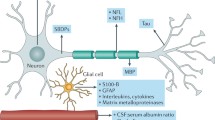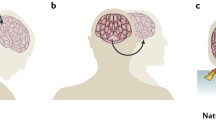Abstract
The objective of this study was to investigate the diagnostic value of serum tau protein in determining the severity of traumatic brain injury in patients with mild traumatic brain injury (mTBI) and high-risk patients. Adult patients who presented to our emergency department (ED) with mTBI over 1 year were prospectively enrolled. Patients underwent cranial computed tomography (CT) and were subdivided into high and low-risk groups, according to the probability of resultant intracranial injury. Serum tau levels of 60 patients and 20 healthy volunteers, who served as a control group, were measured. The mean age of the 60 patients (45 males, 15 females) was 32.5 years (range, 15–66 y). Mean Glasgow Coma Scale (GCS) score was 14±0.6. CT scans demonstrated intracranial injury in 11 patients (18.3%) and depressed fracture in 4 patients (6.7%). Serum tau levels of patients (188±210 pg/mL), compared with those of controls (86±48 pg/mL), were relatively higher; however, differences were not statistically significant (P=.445). Also, serum tau levels of high-risk patients (307±246 pg/mL) were significantly higher than those of low-risk patients (77±61 pg/mL) (P=.001). A total of 48 patients (80%) were accessible for follow-up after 6 months. Postconcussive syndrome was observed in 8 patients, 5 of whom had serum tau protein levels that were higher than those of the other 3 patients. However, no statistically significant difference was observed (P > .05). Investigators of the present study noted that serum tau levels in patients with mTBI were increased. Therefore, it is believed that this biomarker may prove helpful in identifying high-risk patients with mTBI. However, additional studies are needed to establish the diagnostic value of serum tau in detecting traumatic brain injury in patients with mTBI.
Similar content being viewed by others
References
Geijerstam JL, Britton M, Marke LA. Mild head injury: observation or computed tomography? Economic aspects by literature review and decision analysis.Emerg Med J. 2004; 21: 54–58.
Gottesfeld SH. Mild traumatic brain injury.Turk J Emerg Med. 2001; 1: 87–95.
Neumar RW. Rule out TBI? Serum markers for traumatic brain injury.Ann Emerg Med. 2002; 39: 342–343.
Shaw GJ, Jauch EC, Zemlan FP. Serum cleaved tau protein and clinical outcome in adult patients with closed head injury.Ann Emerg Med. 2002; 39: 254–257.
Hermann M, Curio N, Jost S, et al. Release of biochemical markers of damage to neuronal and glial brain tissue is associated with short and long term neuropsychological outcome after traumatic brain injury.J Neurol Neurosurg Psychiatry. 2001; 70: 95–100.
McKeating EG, Andrews PS, Mascia L. Relationship of NSE and protein s-100β concentration in systemic and jugular venous serum to injury severity and outcome after traumatic brain injury.Acta Neurochir (Wien). 1998; 71: 117–119.
Raabe A, Grolms C, Keller M, et al. Correlation of CT findings and serum brain damage markers following severe head injury.Acta Neurochir (Wien). 1998; 140: 787–792.
Raabe A, Grolms C, Sorge O, et al. Serum s-100β protein in severe head injury.Neurosurgery. 1999; 45: 477–483.
Waterloo K, Ingebrigtsen T, Romner B. Neuropsychological function in patients with increased serum levels of protein s-100β after minor head injury.Acta Neurochir (Wien). 1997; 139: 26–32.
Zemlan FP. Antibodies to CSF tau.J Neurochem. 1999; 73: 437–438.
Biros MH. Head and spinal trauma. In: Rosen P, Barkin R, eds.Emergency Medicine: Concepts and Clinical Practice. St. Louis, Mo: Mosby; 1998: 416–447.
Stein SC, Ross SE. Moderate head injury: a guide to initial management.J Neurosurg. 1992; 77: 562.
Woertgen C, Rothoerl RD, Holzschuh M, Metz C, Brawanski A. Comparison of s-100β and NSE serum measurements after severe head injury.Acta Neurochir (Wien). 1997; 139: 1161–1165.
Raabe A, Seifert V. Protein s-100β as a serum marker of brain damage in severe head injury.Neurosurg Rev. 2000; 23: 136–138.
Zemlan FP, Jauch EC, Mulchahey J, et al. C-tau biomarker of neuronal damage in severe brain injured patients: association with elevated intracranial pressure and clinical outcome.Brain Res. 2002; 947: 131–139.
Woertgen C, Rothoerl RD, Metz C, Brawanski A. Comparison of clinical, radiologic and serum prognostic factors after severe head injury.J Trauma. 1999; 47: 1126–1130.
Chatfield DA, Zemlan FP, Day DJ, Menon DK. Discordant temporal patterns of s-100β and cleaved tau protein elevation after head injury: a pilot study.Br J Neurosurg. 2002; 16: 471–476.
Ingelson M, Blomberg M, Benedikz E, et al. Tau immunoreactivity detected in human plasma, but no obvious increase in dementia.Dement Geriatr Cogn Disord. 1999; 10: 442–445.
Sjögren M, Vanderstichek H, Agren H, Zachrisson O. Tau and Aβ42 in cerebrospinal fluid from healthy adults 21–93 years of age: establishment of reference values.Clin Chem. 2001; 47: 1776–1781.
Reiber H. Dynamics of brain-derived proteins in cerebrospinal fluid.Clin Chim Acta. 2001; 310: 173–186.
Irazuzta JE, Myers G, Zemlan FP, et al. Serum cleaved tau protein and neurobehavioral battery of tests as markers of brain injury in experimental bacterial meningitis.Brain Res. 2001; 913: 95–105.
Mehta PD, Patrick BA, Dalton AJ, et al. Increased levels of tau-like protein in patients with Down syndrome.Neurosci Lett. 1999; 275: 159–162.
Süssmuth SD, Reiber H, Tumani H. Tau protein in cerebrospinal fluid (CSF): a blood-CSF barrier related evaluation in patients with various neurological diseases.Neurosci Lett. 2001; 300: 95–98.
Zemlan FP, Rosenberg WS, Luebbe PA, et al. Quantification of axonal damage in traumatic brain injury: affinity purification and characterization of cerebrospinal fluid tau proteins.J Neurochem. 1999; 72: 741–750.
Ingebrigtsen T, Romner B. Serial s-100β protein serum measurements related to early magnetic resonance imaging after mild head injury. Case report.J Neurosurg. 1996; 85: 945–948.
Ingebrigtsen T, Romner B, Trumpy JH. Management of minor head injury: the value of early computed tomography and serum protein s-100β measurements.J Clin Neurosci. 1997; 4: 29–33.
Biberthaler P, Mussack T, Wiedemann E, et al. Evaluation of s-100β as a specific marker for neuronal damage due to minor head trauma.World J Surg. 2001; 25: 93–97.
Author information
Authors and Affiliations
Rights and permissions
About this article
Cite this article
Bulut, M., Koksal, O., Dogan, S. et al. Tau protein as a serum marker of brain damage in mild traumatic brain injury: Preliminary results. Adv Therapy 23, 12–22 (2006). https://doi.org/10.1007/BF02850342
Issue Date:
DOI: https://doi.org/10.1007/BF02850342




